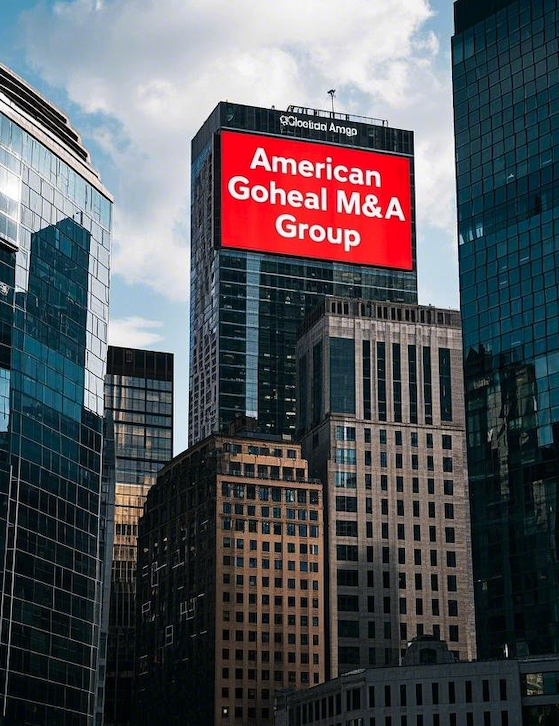"Those who benefit in the short term are flocked to; those who benefit in the long term are confused." In today's capital market, this sentence is still heartbreaking. Faced with a series of fancy announcements and a series of dazzling capital actions, small shareholders are most afraid of not being able to understand, but looking in the wrong direction.
On the "Vientiane Capital Stage" of A-shares, listed companies are sometimes like actors - sometimes they announce "asset restructuring" in a high-profile manner, sometimes they suddenly release "high dividends and transfers", and at worst, they can also get "equity incentives" to get hot. They all look like "good news", but in the end, only small shareholders standing guard at high positions are left, silent as a mystery in the collapse of the K-line chart.
In June 2024, a consumer listed company with a market value of only 4 billion yuan, without any signs, issued a merger and acquisition plan, intending to acquire a "reasonably valued" AI marketing company with 900 million in cash. As expected, the stock price rose to the daily limit on the day of the announcement, and retail investors followed up enthusiastically. However, three months later, the China Securities Regulatory Commission reported that the target company's revenue and profit were seriously inconsistent, the transaction was stopped, and the stock price plummeted by more than 50%, leaving investors who stepped into the trap in tears.
Goheal has long been concerned about the capital operation strategies of listed companies and found that capital scripts similar to "false positives" are not uncommon. From "false restructuring" to "performance betting traps", from "high dividends and transfers to cover share reductions" to "using hot concepts to divert attention", they are like gorgeous but empty stage plays, relying on light and shadow to please the audience, but lacking substantive content.

American Goheal M&A Group
The question is, how can small shareholders see through this play?
Let's start with the most common "routine announcement": mergers and acquisitions disguised as innovation.
On the surface, these mergers and acquisitions projects are ambitious and seem to create a "second growth curve." But if you look a little deeper, you will find many problems: either the target company has been established for a short time and its profits are unstable; or the transaction premium is high and the valuation logic is based on "brainstorming"; even worse, in many cases, the actual controllers behind the scenes have already been in collusion, and the purpose of the acquisition is more to transfer benefits rather than coordinated development.
Goheal once dismantled a typical case - a small-cap company mainly engaged in textiles spent money to acquire a digital training company that has never made a profit, claiming to "embrace the AI wave." As soon as the project was announced, the market was boiling. But a closer look at the details of the contract revealed that the target company was controlled by the relatives of the major shareholder, the transaction valuation premium was 25 times, and the gambling clause was extremely loose. In the end, the project failed, the major shareholder successfully reduced its holdings, and the small shareholders were collectively buried.
What about those "equity incentive plans" that make people excited? Some are indeed based on the original intention of long-term binding of talents and encouraging work, but some are just a cover for the controlling shareholder to dilute the holdings and transfer chips. When you see a listed company "launching an incentive plan in a high-profile manner", don't rush to like it. First, check whether the incentive targets are "our own people", whether the grant price is "cheap", and whether the performance assessment is "water over duck backs".
What about those "high-send and transfer plans"? Many retail investors are excited to see "10 for 10" and think that "the company is generous and the stock price will rise", but they forget that the shares are not cash, and the total plate becomes larger, and the stock price will often "shrink" accordingly. The truth behind many announcements is that they are in order to attract short-term hot spots to attract buying orders and facilitate some major shareholders to reduce their holdings at high positions.
Goheal believes that when investors face these "false positives", they may wish to "train their eyesight" from the following aspects:
First, see if the transaction background is natural and smooth. A logical capital operation is usually based on business needs or strategic upgrades, rather than a sudden "hot word hot spot". If you find that this company that mainly deals in machinery suddenly says it wants to acquire a startup project engaged in Web3, then there is probably something wrong.
Second, see if the information disclosure is solid and specific. Really sincere operations often state in the announcement the transaction valuation method, source of funds, risk disclosure and even the historical shareholder changes of the target. On the contrary, those who are vague, evasive and use abstract words to pile up announcements are most likely just drawing cakes to fill their stomachs.
Again, see if there is a "transaction vortex" with related parties. Goheal repeatedly reminded: What small shareholders fear most is not the failure of the project, but that the project is just a game of the controlling shareholder from the beginning. It is necessary to develop the habit of checking "who is the opponent", and be vigilant in any project that appears "relatives, funds, employee shareholding platforms".
Finally, see whether the transaction has set up a reasonable performance bet and compensation mechanism. Don't be blinded by "promised profits of hundreds of millions", but also see if you can really compensate when the promise fails? Can you afford it? Is the compensation in the form of cash, shares, or "empty promises"?
Of course, we are not going to deny the value of capital operations of listed companies. On the contrary, if capital operations are used properly, they can inject new momentum into enterprises and bring about real growth transformation. But investors cannot blindly believe in the capital action itself, but must see the motivation and path behind the action.
More importantly, small shareholders must understand: in this era of narrative flooding, rationality is your last amulet.
When facing customers, Goheal often reminds them with a sentence: "The capital market is not a story market. Any story without cash flow support is an illusion." This sentence is also for everyone standing at the forefront of the secondary market.

Goheal Group
We are at a capital node where the old and the new are intertwined. Supervision is tightening, delisting is accelerating, and the registration system is deepening... The "new ecology" of the capital market is taking shape, and small shareholders in it should cultivate a pair of "fire eyes and golden eyes" to identify the "sugar coating" in the good news and distinguish the "bayonet" behind the announcement.
If you have also been "plot-turned" in the "false good news", if you have also learned to be cautious in chasing themes, then you might as well leave a message to share your story.
What do you think is the "most likely to make people get carried away" capital illusion? Have you stepped on anyone's pit? Welcome to leave a message in the comment area, and work together to help small shareholders protect themselves - Goheal is willing to work with you to build an investment environment with more transparent information and more rational operations.
[About Goheal] Goheal is a leading investment holding company focusing on global mergers and acquisitions, focusing on the three core business areas of listed company control acquisition, listed company mergers and acquisitions and restructuring, and listed company capital operations. With its deep professional strength and rich experience, it provides enterprises with full life cycle services from mergers and acquisitions to restructuring and capital operations, aiming to maximize corporate value and achieve long-term benefit growth.